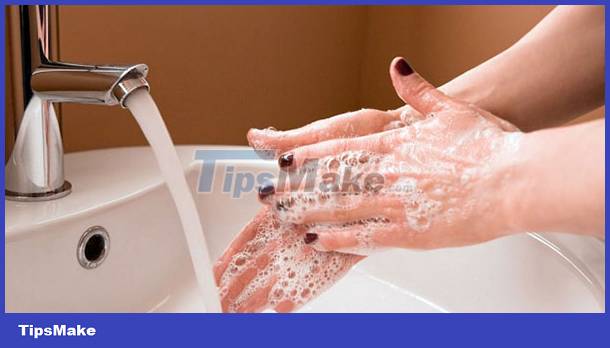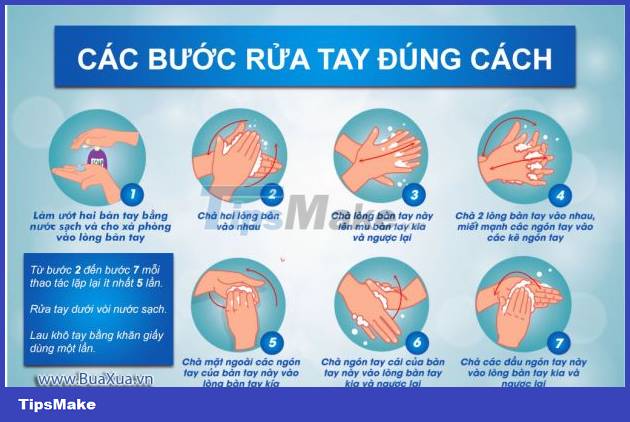Proper hand washing helps prevent and prevent the spread of germs
Washing your hands is a seemingly simple thing, but it will bring a lot of benefits to you. However, if you do not know how to wash your hands properly, it will not be possible to remove harmful microorganisms on your hands.
 Proper hand washing helps prevent and prevent the spread of germs
Proper hand washing helps prevent and prevent the spread of germs
Hands often have a lot of bacteria
The hand is the most flexible part of the human body such as working, eating, personal hygiene, holding things, . so it has to come into contact with a lot of things from food, soil, sand, feces, animals, . so on the hands often have a lot of bacteria. Bacteria on the skin of the hands are divided into two groups: resident bacteria and transient bacteria.
Sedentary bacteria usually reside in the deep layers of the epidermis. Normal hygiene does not remove these bacteria from the hands, but regular cleaning can reduce the level of bacteria colonization on the hands.
Transient bacteria include bacteria that are found on surfaces that come into contact with hands. However, these bacteria can be easily eliminated with regular hand washing.
Because we have to come into contact with so many objects, our hands can have disease-causing microorganisms such as E.coli bacteria after we have a bowel movement or influenza virus, measles virus after blowing our nose with our hands, . If you don't wash your hands properly, you can spread these bacteria and viruses everywhere you touch them or the microorganisms themselves will make you sick.
Hand washing helps to remove harmful microorganisms from the hands
Hand washing helps to remove harmful microorganisms from the hands. This is an important and simple way to prevent and prevent the spread of disease. In addition, it also helps to reduce the risk of disease and disease transmission as well as reduce the rate of antibiotic resistance.
According to the Centers for Disease Control and Prevention (CDC), hand washing helps:
- Reducing the number of people suffering from diarrhea by 23 - 40%.
- 58% reduction in diarrhea in people with weakened immune systems.
- 16-21% reduction in respiratory illnesses, such as colds, in the general population.
- Reduce by 29 - 57% the rate of children having to miss school due to gastrointestinal diseases.
Wash your hands at the right time to bring the best effect
We need to wash our hands at the right time and in the right way to have the best effect.
- Wash hands before, during, and after cooking.
- Wash hands before eating.
- Wash your hands before and after treating the wound.
- Wash your hands before and after caring for someone who is sick.
- Wash your hands after using the toilet (to defecate and urinate).
- Wash your hands after blowing your nose, coughing or sneezing.
- Wash hands after changing diapers or and cleaning children who have used the toilet.
- Wash your hands after touching animals, animal feed or animal waste.
- Wash your hands after touching garbage or dirty objects.
Steps to wash hands properly
Proper hand washing is washing hands with soap, following procedures and under clean running water.
 Steps to wash hands properly
Steps to wash hands properly
- Wet hands with clean water, take soap into palms.
- Rub your palms together.
- Rub one palm over the back of the other and vice versa.
- Rub your palms together, rubbing your fingers vigorously between your fingers.
- Rub the outer side of the fingers of one hand against the palm of the other and vice versa.
- Rub the thumb of one hand against the palm of the other and vice versa (palm hugs the thumb).
- Rub these fingertips into the palm of the other hand and vice versa.
- Wash your hands under clean running water up to the wrist.
- Use soap or hand sanitizer.
- Wash your hands for at least 30 seconds.
- From step 2 to step 7 repeat each operation at least 5 times.
- Dry hands with disposable paper towels.
 Signs on your face help identify your health
Signs on your face help identify your health How to reduce wrinkles on face
How to reduce wrinkles on face Tips to get the ideal waist
Tips to get the ideal waist Foods that help increase memory
Foods that help increase memory Eating purple foods helps you stay young longer
Eating purple foods helps you stay young longer Fruits and vegetables rich in antioxidants
Fruits and vegetables rich in antioxidants